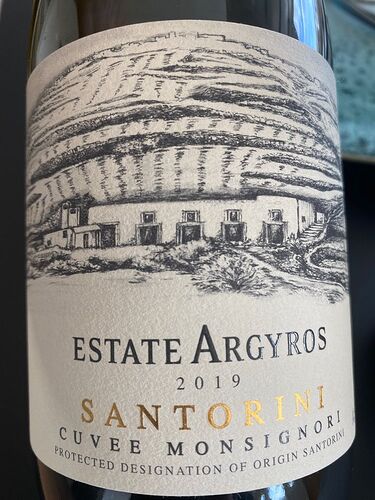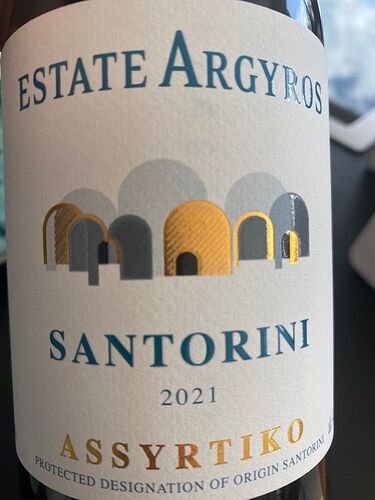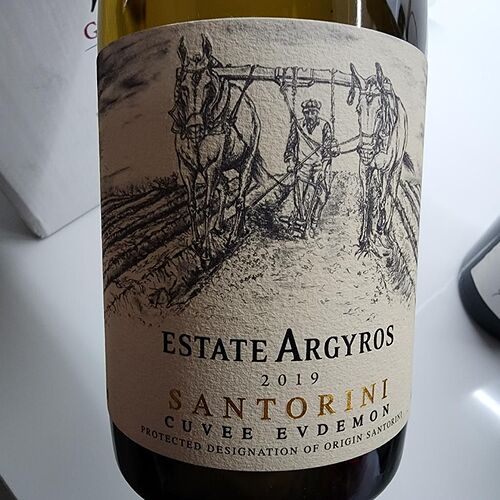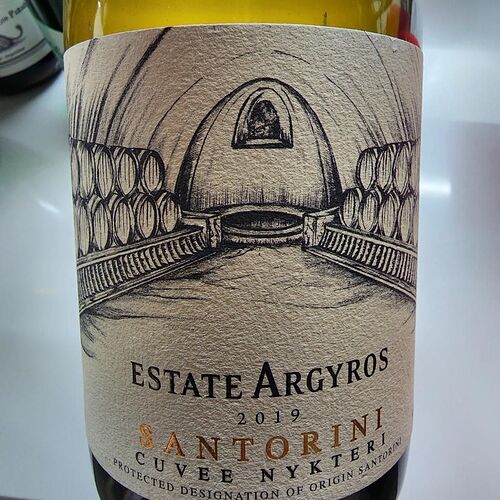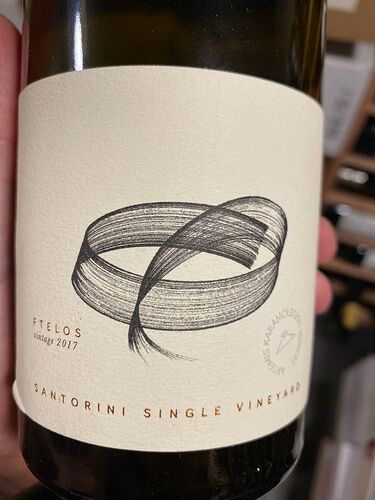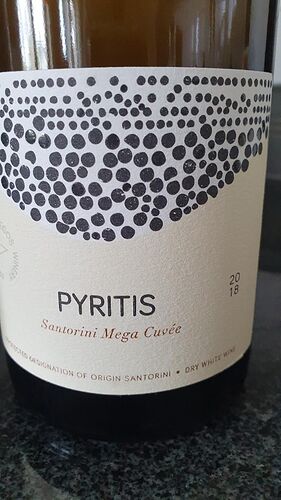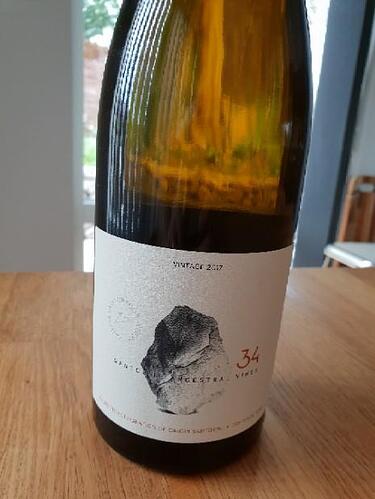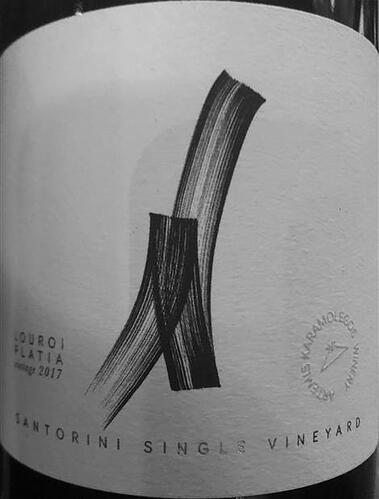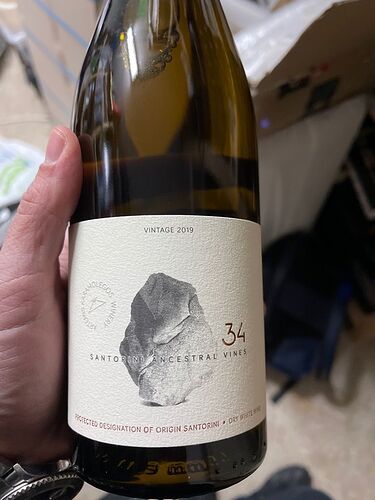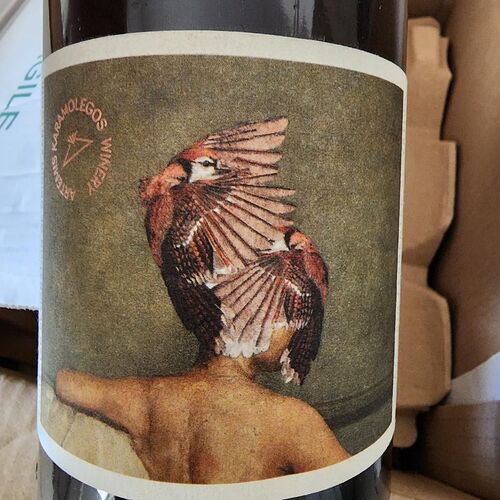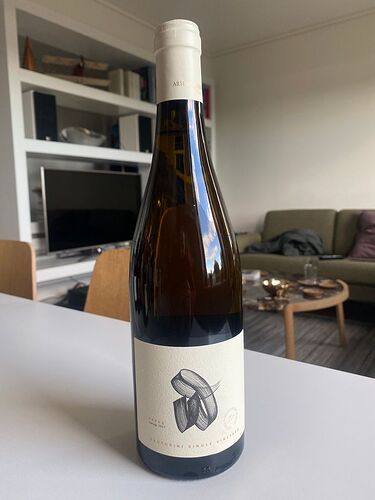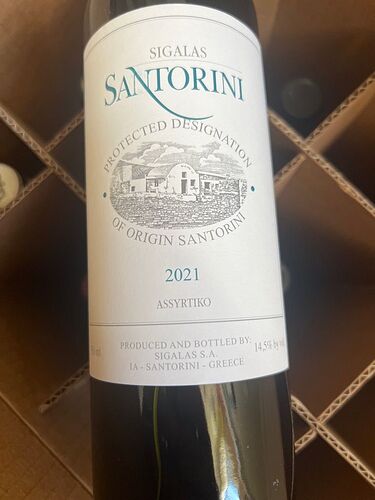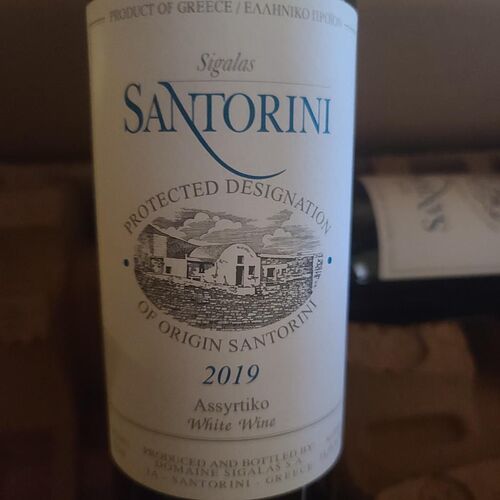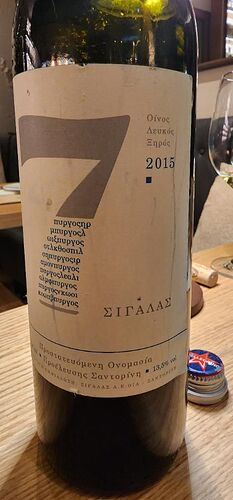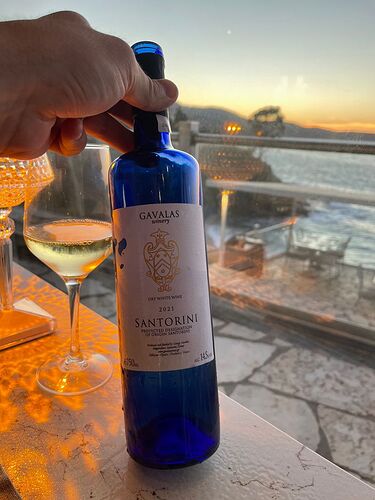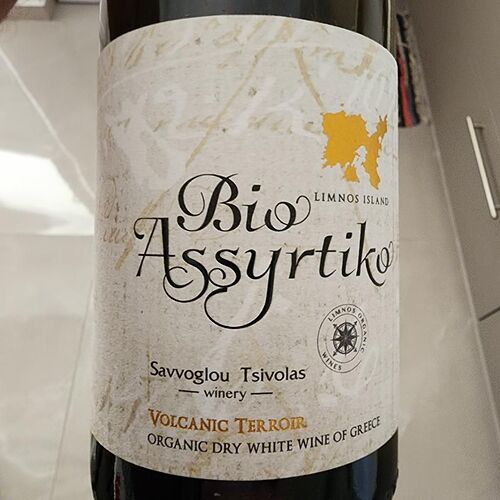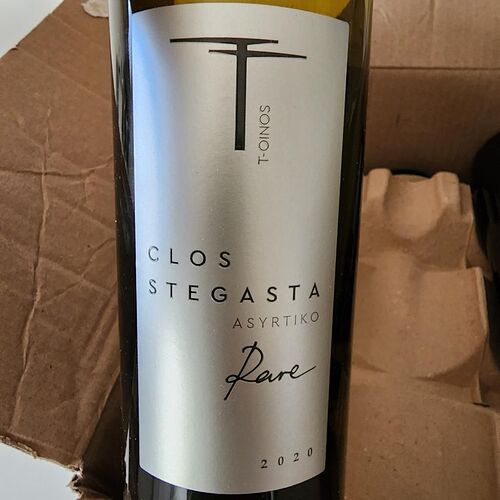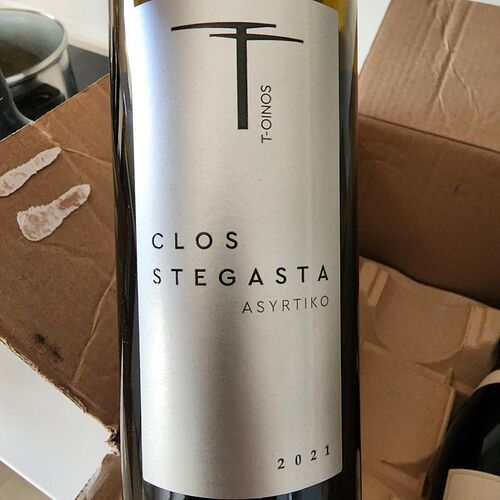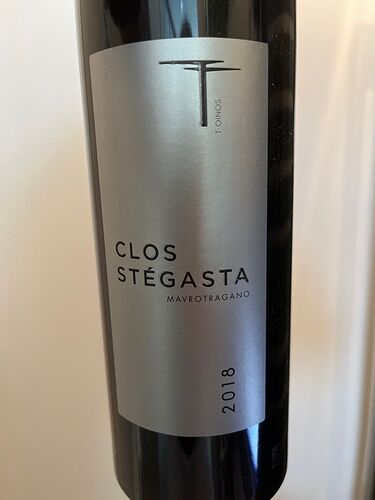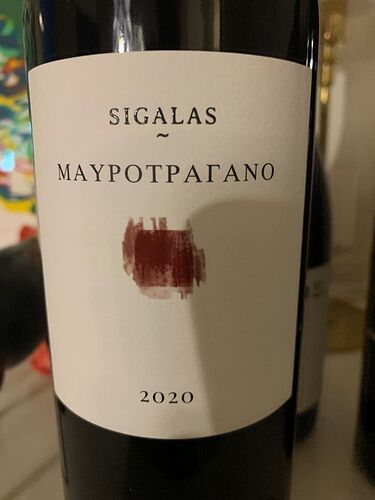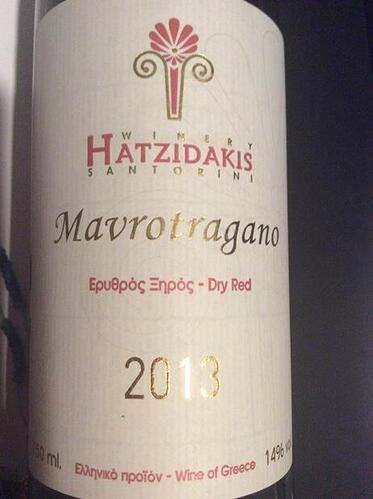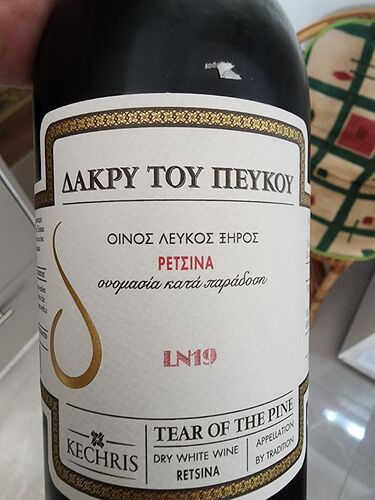Been living in Cyprus for the last three months and while there is a really dynamic and growing wine scene on the island, I will frankly admit that the blowing-up of access to the top tier of Santorini has been the most exciting for me. A good portion of these wines were bottles consumed while my mother-in-law fed me fish lunches, so my scores might be skewed up (but they aren’t.)
Grouped by producer and I grouped repeat notes on the same wines. Weirdly low on Hatzidakis this time around, I just realized.
At the end are a couple of non-Assyrtiko of note. And a special carve out for a non-Santorini producer whose wines are truly spectacular.
-
2019 Argyros Assyrtiko Cuvée Monsignori - Greece, Aegean, Cyclades, Santorini (12/12/2022)
Beautiful. Nothing I can add to other notes. There is immaculate tension between acidity in balance , salinity, creaminess and a soulful depth. Another example how this grape truly levels up. (94 points)
-
2019 Argyros Assyrtiko Cuvée Monsignori - Greece, Aegean, Cyclades, Santorini (12/29/2022)
Absolutely consistent with two weeks ago which was a restaurant glass pour. From a full bottle, a smidge better if anything. The minerality and acidity was singing even more and had a beautiful dry down. (94 points)
-
2019 Argyros Assyrtiko Cuvée Monsignori - Greece, Aegean, Cyclades, Santorini (2/15/2023)
More lime zest on the finish here. Otherwise wholly consistent. (94 points)
-
2021 Argyros Assyrtiko Estate - Greece, Aegean, Cyclades, Santorini (12/15/2022)
Beautiful wine. While the acidity isn't as intense as other vintages, there is a depth of minerality and succulence with an immaculate, haunting drydown. (And to soapbox - I've often felt the acidtity of Ayssrtiko was being amped/faked to compete with the coolness of Muscadet versus being authentic.)
Lovely freshness on the note with pomelo and a slight white cherry reminder. Upfront is acidualuated OJ, but checked and re-fied with mineral, saline and a slight lactic+ aspect. Herbal in tones and a savory element. Shellfish. Finish is a little too polished and the lactic heads to eager-to-please creaminess, but the overall mien is still dynamite. (91 points)
-
2019 Argyros Assyrtiko Cuvée Evdemon - Greece, Aegean, Cyclades, Santorini (1/2/2023)
Disappointing compared to the Monsignori. High toned citrus acids are good. A nice linearity. Nose is basic. The mineral is muted and the extra dimension just isn't there. (90 points)
-
2019 Argyros Assyrtiko Cuvée Nykteri - Greece, Aegean, Cyclades, Santorini (2/11/2023)
Really balanced and intense. Nose has Meyer lemon and a fleshy vibe. Great acids and salinity on the top. Long finish has back beats with the volcanic aspect and a cool nuttiness. Less edgy than some of the SV versions, but lovely. (94 points)
-
2017 Artemis Karamolegos Assyrtiko Ftelos Single Vineyard - Greece, Aegean, Cyclades, Santorini (1/4/2023)
Man, Papies nailed this shit again. I don't know what it is, but while this is beautiful and correct but something is wrong and missing here. That said, this was also super cross over into Puligny in its vibe. (91 points)
-
2018 Artemis Karamolegos Pyritis Mega Cuvee Santorini - Greece, Aegean, Cyclades, Santorini (1/23/2023)
Very linear and direct, but quite succulent. Light nose with Paloma and slight fleshiness. Bright acidity and mineral. Good structure and cut. Solid finish that tapered nicely. Did extremely well, but never exceeded.
-
2017 Artemis Karamolegos Assyrtiko 34 Ancestral Vines - Greece, Aegean, Cyclades, Santorini (1/17/2023)
I bought same time as previous bottle and totes forgot it was in my storage unit in Cyprus. Time has slaked the acids a bit on the attack. Mineral core is still lovely. Citrus pomelo is more refined, to a slight detriment tbh. Finish really layers up with a little chew to it and then acidic bounce and taut chalkiness. With just a smidge of air, there is an amazing precision here. Digging this hard. (94 points)
-
2017 Artemis Karamolegos Assyrtiko Louroi Platia Single Vineyard - Greece, Aegean, Cyclades, Santorini (1/25/2023)
I wish I was as bullish as Papies. Ça va. The nose is insane with peaches, night jasmine and coral reef. On the front though, there is a serious perception of sweetness that is almost cloying - a thickness that the acidity isn't checking and the minerality + base notes aren't picking up the slack. I do like it and admire the quality, but this just isn't as dialed into what I really want here. (90 points)
-
2019 Artemis Karamolegos Assyrtiko 34 Ancestral Vines - Greece, Aegean, Cyclades, Santorini (2/5/2023)
The vibe is off here somehow. Nose is solid with musky peaches and a little lava/clay vibe. Bright acids. Good fruits and a mineral core. Drops the beats though. Picks up some weight on the finish with quince and mineral water salinity and citrus zest. A good wine, but feels distracted. (92 points)
-
2018 Artemis Karamolegos Assyrtiko Mystirio / 19 - Greece, Aegean, Cyclades, Santorini (2/6/2023)
Sick. This isn't as unrestrained as the previous I had but has a remarkable subtle vibe that both grooves on "orange" wine and captures the ineffable beauty of Santorini Assyrtiko.
Nose is oddly pale with slight sexy varnish (reminds me of painter gf) and orange peel. For an orange wine, this is really defined by lightness and subtle. Lovely and deep Santorini Assyrtiko vibes on the top with oranges bleeding into Meyer lemon. Lacy structure and dank acidics define the middle. Finish has immaculate dry down with chypre, old furniture and old Chanel elements. Just gorgeous all around and held for 2+ hrs with a perfect bead. So amazing. (97 points)
-
2017 Artemis Karamolegos Assyrtiko Papas Single Vineyard - Greece, Aegean, Cyclades, Santorini (1/15/2023)
Gorgeous. There is more extract and weight here than the usual Santorini. Really heads into deep Burg waters with a Greek volcanic minerality inside. Citrus and guava. A bit of fleshiness and then struts with Rubenesque vibe that totally works when the dry down is mineral acidic and herbal bitters. Insane good. (96 points)
-
2021 Sigalas Assyrtiko Santorini - Greece, Aegean, Cyclades, Santorini (1/14/2023)
Solid of type. Did very well with seafood mezes. Cool bitter notes too. (88 points)
-
2022 Sigalas Assyrtiko Santorini - Greece, Aegean, Cyclades, Santorini (1/21/2023)
Solid. There is a consistent vibe in this wine across vintages. The bitter elements are a smidge less than the '21 a week ago, but is also slightly richer and fatter. If you have this in your glass, you shouldn't be complaining. (88 points)
-
2015 Sigalas Assyrtiko Epta Pyrgos - Greece, Aegean, Cyclades, Santorini (1/26/2023)
Wow. This was just exquisite and really dialed into my ranting about the vibe connect between white Burg (say, Chassagne) and Santorini Assyrtiko. Nose has a bass funk and a mineral vibe. Lovely opening texture with weight and then tapering acidity. Citrus, citrus peel, umami. Graceful. Finish has weight and a long dry down with floral fruit elements and a slight bitter edge. A really complete and excellent wine. (96 points)
-
2019 Hatzidakis Winery Assyrtiko Skitali - Greece, Aegean, Cyclades, Santorini (1/4/2023)
Very nice. Has a nice balance of slightly peachy notes and citrus brightness. Good mineral core. Lighter on the finish with an abrupt drop in intensity that dings this a bit. Still a good version. (91 points)
-
2021 Gavalas Winery Assyrtiko Santorini - Greece, Aegean, Cyclades, Santorini (2/13/2023)
OKish. Has a syrupy middle texture that outcompetes the minerality and the acidic fruit. (85 points)
-
2021 Limnos Organic Wines (Savvoglou - Tsivolas) Assyrtiko - Greece, Aegean, Lemnos (12/29/2022)
Meh. This isn't bad and is correct but having near elite level Assyrtiko made this anemic and basic. (86 points)
-
2020 T-Oinos Assyrtiko Clos Stegasta Rare - Greece, Aegean, Cyclades, Tinos (1/12/2023)
Austere nose with a Chablis-reminding-me shells and peach and splashing salinity. Really complex and unfolding. Bright acidity with broad shoulders and restrained passion fruit, a quince-bitters backing. Really deep vibes that are different than Santorini. Drops a really great oily texture with almost slate elements and the fruit lengthens, brightens with time. A really dynamic wine. (95 points)
-
2021 T-Oinos Assyrtiko Clos Stegasta - Greece, Aegean, Cyclades, Tinos (1/17/2023)
I can't really rate this. The difference in the Rare is so extreme. This is a nice white wine with solid structure and acidic spine, but is so generic and dialed into a whatever from wherever white that I can't really say anything. I have seldom seen such a drop off from the top tier to the lesser as here with this grape.
-
2018 T-Oinos Mavrotragano Clos Stegasta - Greece, Aegean, Cyclades, Tinos (12/31/2022)
I was skeptical that these cats would deliver something worse the tariff. Nope. This is fucking great. Dark fruits on the nose with a little garrigue (best word I know for pan Med hot herbal wind) . Dark and rich on the palate with kirsch and gorgeous fruit. Very complex and deep. Plums, a little leathery skank. Very complete.
All that said and my score stands, there is a modern vibe that goes hard and reminds me more of a lovely AR Malbec than Greece. (96 points)
-
2020 Sigalas Mavrotragano - Greece, Aegean, Cyclades (2/12/2023)
Took a breath of of a few hours to relax and really shine. Nose was slightly smoky, dark plums and sort of allspice. The oak started as a slight ping in the middle, but faded and then wholly integrated (in about 1 hr) as a base on the texture. Plush and supple. Long finish with red fruits, meaty elements and great intensity. (94 points)
-
2013 Hatzidakis Winery Mavrotragano - Greece, Aegean, Cyclades, Santorini (1/20/2023)
Beautiful and mature. The structure has framed out perfectly and there is nice dark fruits and good acidic balance inside. Nose is a little smokey and a fougere on the nose. Slightly pom w/ an almost grapefruit vibe on the front and then widens out to more cherry and earth. A little balsam on the finish and more fougere. Really balanced and complete. Decanted for clarity and held well for 2+ hrs of dinner. (93 points)
-
2019 Kechris Tear of the Pine Retsina - Greece, Macedonia (12/18/2022)
Not only a gorgeous retsina with floral pine and a really bright mien, it made insane good retsina + tonic.
T-Oinos is a new producer on the island of Tinos who has planted classic Santorini grapes in a fairly new set of high density vineyards. Whereas most non-Santorini is gross, the high end Rare here (north of 100€) was insane good and worth the tariff. . And their red deserve note as well.
And their red
A couple Santorini reds
And a final special shout out to a gorgeous retsina made from Assyrtiko. I am going to hold a few bottles for when I return in summer for retsina-tonic afternoon oblivion.
Posted from CellarTracker
